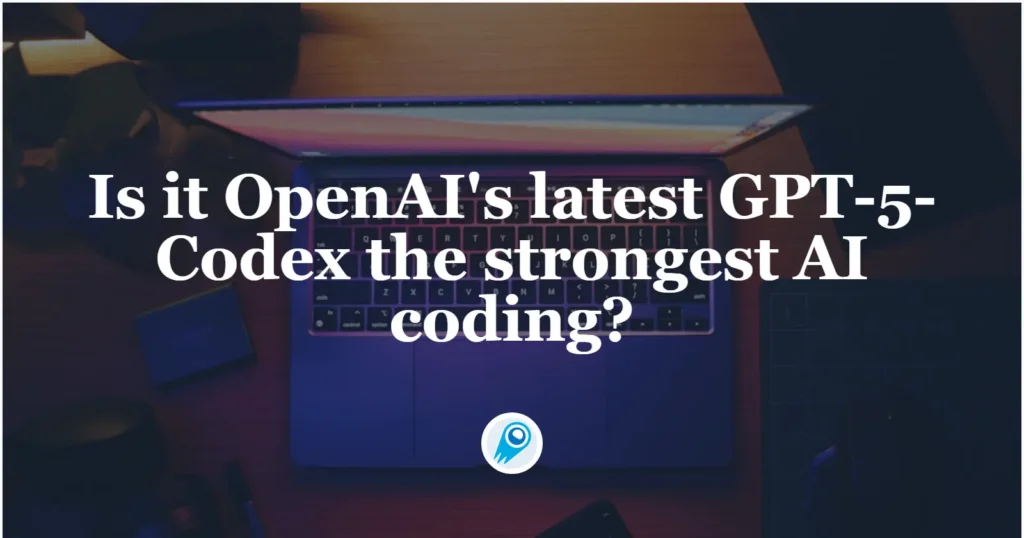Is it OpenAI’s latest GPT-5-Codex the strongest AI coding?

September 15, 2025. OpenAI unveiled GPT-5-Codex, a specialized variant of GPT-5 optimized for agentic software engineering inside its Codex product. The company says the model can operate autonomously on large, complex engineering tasks for more than seven hours at a stretch, iterating on implementations, fixing failing tests, and delivering completed work with reduced human intervention.
What GPT-5-Codex does differently
GPT-5-Codex is not simply a faster autocomplete. OpenAI describes it as optimized for “agentic coding”: the model can plan, execute, test, and refine multi-step software tasks inside Codex’s virtual development environment. That includes running tests, diagnosing failures, refactoring, and producing pull-request-style changes that align with typical human review patterns. The company says it trained the model with reinforcement learning on real-world coding tasks to better mirror developer workflows and PR preferences.
A central technical innovation is dynamic “thinking” time: instead of a fixed short inference pass, the model scales its internal reasoning budget to match task complexity — from a few seconds for small edits to several hours for large, system-level tasks. OpenAI argues this makes Codex a far stronger collaborator on long, flaky, or integrative engineering problems.
Key technical claims
- Multi-hour autonomy: OpenAI and multiple outlets report GPT-5-Codex can spend dynamic amounts of “thinking time” on a task — from seconds to up to seven hours — allowing it to pursue long workflows (e.g., large refactors, multi-file feature builds, and extended debugging) without hand-holding.
- Agentic behavior: The model is tuned to run tests, iterate on failures, propose and apply fixes, and prepare artifacts such as feature branches and PRs — behaviors aimed at reducing repetitive engineering work.
Safety & verification: By default, the model runs in a sandboxed environment, disabling network access to mitigate potential risks. Users can configure security policies, such as restricting access to specific domains or approving the model to execute certain commands. Each task is accompanied by logs, references, and test results for easy verification by developers.
How it fits into Codex and developer workflows
OpenAI is positioning GPT-5-Codex as the engine for Codex across environments — terminals, IDE extensions (VS Code, Cursor and similar), web interfaces, GitHub integrations and mobile — so developers can move work seamlessly between local and cloud sandboxes while preserving state. The updated Codex experience emphasizes parallel tasking, automated code review, and tighter IDE integration so the model can both assist interactively and carry out longer, background engineering tasks inside controlled sandboxes.
OpenAI’s product pages indicate Codex and GPT-5-backed features are rolling out to ChatGPT Plus/Pro/Business/Edu/Enterprise tiers, with broader availability and API support described as forthcoming. Now characterizes the current release as a “half release” for API customers: available inside Codex products today, with direct API access promised soon, and is available to customers using Codex via ChatGPT subscriptions and supported IDE integrations.
What this means for developers and teams
Productivity upside: If the model’s claims hold across real repositories, teams may see faster feature delivery, fewer trivial PR cycles, and automated test-fix loops.
Human in the loop remains essential: Despite extended autonomy, but that human review, security auditing, and policy checks remain required before accepting agent-proposed changes into production.
Operational changes: Adopting multi-hour agentic assistants will likely push teams to formalize sandboxing, CI gates, code-ownership rules, and observability for AI-driven changes.
Conclusion
GPT-5-Codex represents a clear step toward AI agents that can act more like independent engineering collaborators than simple autocompletion tools. OpenAI’s public demos and technical notes claim robust, hours-long autonomy and deeper engineering capabilities, but the model’s practical reliability in production contexts will be judged over the coming months as teams integrate the agent into real workflows and third-party evaluators publish independent assessments.
Getting Started
CometAPI is a unified API platform that aggregates over 500 AI models from leading providers—such as OpenAI’s GPT series, Google Gemini, Anthropic’s Claude, Midjourney, Suno, and more—into a single, developer-friendly interface. By offering consistent authentication, request formatting, and response handling, CometAPI dramatically simplifies the integration of AI capabilities into your applications. Whether you’re building chatbots, image generators, music composers, or data‐driven analytics pipelines, CometAPI lets you iterate faster, control costs, and remain vendor-agnostic—all while tapping into the latest breakthroughs across the AI ecosystem.
CometAPI promises to keep track of the latest model dynamics including GPT-5-Codex, which will be released simultaneously with the official release. Please look forward to it and continue to pay attention to CometAPI. While waiting, you can pay attention to other models, explore the model’s capabilities in the Playground and consult the API guide for detailed instructions. Developers can access GPT-5 ,GPT-5 Nano and GPT-5 Mini through CometAPI, the cometAPI’s latest models listed are as of the article’s publication date. Before accessing, please make sure you have logged in to CometAPI and obtained the API key.



